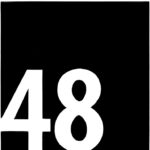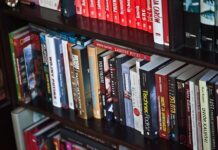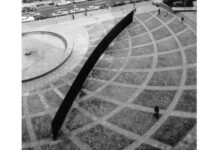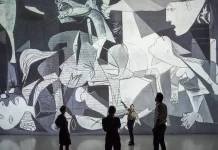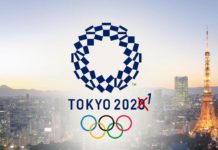A major exhibition about the artists of the renowned Casablanca Art School
Tate St Ives will be the first museum in the UK to explore the intense period of artistic rebirth that followed Morocco’s independence, forged by the experimental teaching methods of the Casablanca Art School in the 1960s and 1970s.
Led by Farid Belkahia alongside Mohammed Chabâa, Mohamed Melehi and others, this pioneering school paved the way for a new generation of socially engaged modern artists who formed an influential avant-garde network.
Works by 22 artists will be brought together to demonstrate the wide variety of the Moroccan ‘new wave’, from vibrant abstract paintings and urban murals to applied arts, typography, graphics and interior design.
The exhibition will also include a selection of rarely-seen print archives, vintage journals, documentary photographs and films.
This exhibition is a collaboration between Tate St Ives and Sharjah Art Foundation, where it will open in February 2024. It is also part of a key moment of international research into the Casablanca Art School, which includes a collaborative project initiated in 2020 between KW Institute for Contemporary Art and Sharjah Art Foundation, in partnership with Goethe-Institut Marokko, ThinkArt and Zamân Books & Curating.
INTRODUCTION
Platforms and patterns for a postcolonial avant-garde
1962–1987
In the exhilaration of Moroccan Independence (1956), staff and students at the Casablanca Art School (CAS) prompted an artistic revolution. They integrated abstract art with Arab and Amazigh (Berber) traditions, inspired by the region’s rugs, jewellery, calligraphy and painted ceilings. Declaring a new art for Morocco grown from Afro-Berber heritage, they created a social and cultural uprising.
When French colonial powers established the Casablanca Art School (École municipale des beaux-arts de Casablanca) in the 1920s, students were assigned by ethnicity, gender and social status. Western teaching prevailed in the School, disregarding the traditional arts and crafts of the region. In 1960s Morocco – a country now liberated from French and Spanish colonial powers – Farid Belkahia was appointed CAS director (1962–74). He broadened access to the CAS to include Moroccan and women students and enrolled like-minded teachers. The staff and students radically reimagined Moroccan art and arts education. They placed their art into everyday life, creating paintings, posters, magazines, outdoor murals and festivals. This Moroccan ‘new wave’ triggered an urban movement, eventually contributing to artistic solidarities between Africa, Latin America and West Asia.
PLATFORMS 1962–1987
1962 Farid Belkahia becomes director of the Casablanca Art School, following Maurice Arama who began the modernisation of the CAS in 1960.
1964 Toni Maraini and Mohamed Melehi begin teaching art theory and practice at the CAS.
1965 Bert Flint appointed to the CAS to teach African and Amazigh popular art. First issue of Maghreb Art, the CAS research report.
1966 Mohammed Chabâa arrives at the CAS to teach graphic design and decoration. First issue of Souffles journal, founded by Abdellatif Laâbi.
1968 CAS student exhibition involving Malika Agueznay,Abdellah El Hariri, Houssein Miloudi, Abderrahman Rahoule and others, directed by Chabâa and Melehi.
1969 Présence Plastique manifesto-exhibition. Mohamed Ataallah, Belkahia, Chabâa, Mustapha Hafid, Mohamed Hamidi and Melehi create outdoor exhibitions.
1971 Maraini and Melehi found Integral magazine.
1972 Chabâa is imprisoned by Moroccan powers (with Laâbi) for his Marxist commitment via Souffles journal.
1974 Belkahia leaves the CAS. The CAS group continue to exhibit collectively, representing Morocco at the Baghdad Biennale.
1977 The CAS group helps organise the Rabat Biennale.
1978 The first International Cultural Moussem (festival) of Asilah and open-air museum.
1985 Many CAS artists exhibit in Présence artistiques du Maroc at the Museum of Grenoble, France.
1987 Belkahia, Melehi, Mohammed Kacimi and Fouad Bellamine represent Morocco at the São Paulo Biennale, Brazil.
CREATING COLLECTIVELY
The 1968 annual Casablanca Art School exhibition launched a ‘new wave’ of art for Morocco. This room displays works by the pioneering students who took part.
In his first years as CAS director, Farid Belkahia invited Toni Maraini to establish Morocco’s first modern art history course. Mohamed Melehi (painting) and Mohammed Chabâa (graphic design) were appointed as tutors, with Bert Flint teaching visual anthropology. This new faculty merged ideas from art, craft, design and architecture, taking influence from their studies abroad and the interdisciplinary approach of the Bauhaus design school in Germany.
Working alongside their students, CAS teachers began to dismantle Western styles and methods – like easel and oil painting – previously taught at the School. Instead, classes encouraged research into Arab and Amazigh heritage, with trips to study archaeology, calligraphy, jewellery, pottery, religious paintings, and techniques from leatherwork, tattoos and weaving. Maraini described: ‘travelling throughout the country to gather information, take photographs and notes, study sources and document the works of male and female artisans.’ By the 1968 exhibition, the collective artworks of CAS students synthesised these influences with a modernist language and style.
MAKING ART PUBLIC
The 1969 outdoor exhibitions Présence Plastique made a statement: modern art would now be part of Moroccan everyday life.
By this time, artists Mohamed Ataallah, Mustapha Hafid and Mohamed Hamidi had joined the Casablanca Art School as professors. The CAS faculty were frustrated: more than ten years after independence, nothing had been organised by or for Moroccan artists. With few galleries to show their work, they united to develop the street exhibitions Exposition-Manifeste / Présence Plastique (Manifesto-Exhibition / Plastic Presence).
Présence Plastique protested the state-organised Salon du Printemps (Spring Fair exhibition), a colonial relic that categorised Moroccan artists as ‘naïve’ painters. In two events, CAS artists brought their art onto the streets. They installed paintings and murals in public squares, invigorating Marrakech’s medina (historic district) and in Casablanca. Toni Maraini described: ‘People from all walks of life (urban, rural, and every social class) gather[ed] in a unique state of mind. We hung our works here for ten days … To show works outside of the closed doors of galleries and salons, where this audience had never been.’ This nomadic exhibition was also taken to High Schools in Casablanca in 1971, reaching a next generation audience.
AFRO-BERBER HERITAGE
Tradition inspired the future: instead of belonging solely to history, the heritage of Casablanca Art School students would live through their art.
CAS staff and students began to work in collaborative and experimental ways. Tutor Bert Flint was motivated to research the most striking rugs and jewellery from rural regions, giving them a new life as teaching tools. Absent from museum collections, influences from Arab, Amazigh, Islamic and Mediterranean heritage, and ancient Mesopotamia and Phoenicia, began to surface in the works of CAS artists. They revisited craft traditions that Western teaching had considered utilitarian or ornamental, and started to incorporate calligraphy, decorative symbols and geometric spiritual patterns, with local materials such as copper, skin (leather), wood and wool.
In an interview with the co-curator of this show, CAS tutor Mohamed Melehi explained: ‘Bert Flint [inspired] the students with their own but ignored cultural roots; to lead them to believe that there is a strong and local – not foreign – artistic expression in Moroccan culture, with its own right to modernity.
DESIGN FOR EVERYDAY
Artists and architects created an integrated vision for the regeneration of neglected spaces and districts.
The architects studio Faraoui & de Mazières collaborated with Casablanca Art School artists. Based in Casablanca and Rabat, they developed a decorative vision across multiple sites and public infrastructure projects. Between 1967–82, they designed interiors at Casablanca’s National Bank for Economic Development, the National Tourist Office, factories, hospitals, universities, vacation centres and newly built hotels. Integrating art and craft with architecture, they regarded the ceilings, fitments, furniture, lobbies and walls of buildings as ‘plastic territories’ awaiting their creative intervention.
On several hotel projects, the trio Farid Belkahia, Mohammed Chabâa and Mohamed Melehi collaborated with artists represented in this room: Carla Accardi, Hamid Alaoui and Mohamed Hamidi. Toni Maraini described their mission. To make art present to life, to (re)integrate creation to the human environment, to the lived space and to the daily things … a work of prevention from environmental degradation.’
GRAPHIC DESIGN
Casablanca Art School tutor Mohammed Chabâa expressed, ‘the poster is a painting that is accessible to all’.
CAS artists used graphic design to place their art into public life. In the School workshops, traditional mediums like painting were enhanced with design strategies. Tutor Mohamed Melehi combined painting with collage and opened a pioneering photography studio, with Chabâa teaching decoration, scenography and neo-calligraphy.
Melehi and Chabâa co-designed the journal Souffles – as with many of the posters and books displayed here. Melehi described Souffles as a ‘thought-provoking blend of poetry, literature and cultural critique’ that aspired to decolonise and democratise Moroccan arts and culture. The journal was published from 1966 until its ban in 1972 when Chabâa (then sole designer) was imprisoned as a Marxist activist under Moroccan power. The founder and poet Abdelatiff Laâbi was imprisoned for eight years for cultural activism.
Chabâa established Studio 400 for graphic and interior design, and Melehi opened Shoof Publishing and graphic studio. Their work reflected their political commitments, including designing posters and logos in solidarity with Angolan and Palestinian people and resistance movements.
PAN-ARAB SOLIDARITY
Artists associated with the Casablanca Art School contributed to artistic and political solidarities between Arab independent nations.
The first pan-Arab Biennial opened at Baghdad’s Museum of Modern Art in Iraq in 1974. Federated by the General Union of Arab Artists, it brought together artists from 14 Arab nations and displayed over 600 artworks. Morocco was represented by 14 artists related to the CAS who, rejecting popular trends in painting, were seen as the most vivid and dynamic ‘new wave’. Works by this Moroccan delegation are displayed in this room.
The Casablanca artists organised the second pan-Arab Biennial in Rabat, Morocco, in 1977, extending communication to further Arab independent nations. The following year, Mohammed Chabâa and Mohamed Melehi designed the official poster for The International Art Exhibition for Palestine, which took place in Beirut, Lebanon. This act of collective resistance, organised by the Palestine Liberation Organization, exhibited over 200 artworks by artists from almost 30 countries.
OPEN AIR MUSEUM
The annual International Cultural Moussem (festival) of Asilah is famous for its outdoor exhibitions, murals, live art and music.
Mohamed Benaïssa and Mohamed Melehi co-founded the Asilah festival in 1978. The event transformed their homeland in northern Morocco into a landscape of street exhibitions and frescos (wall paintings). They organised painting, sculpture, and ceramic exhibitions with activities, lectures, theatre and concerts. Toni Maraini led workshops for children, contributing to community murals and rehabilitating the buildings of the neglected medina. Maraini recounted, ‘We wanted to reach the general public where they live, in a casual and accessible way … paintings shown outdoors, in the public space’. Works by key artists from the first Asilah festival are represented in this room.
Melehi invited artists from Africa, the Arab nations, Asia, Europe and the United States. Their collective vision was to beautify daily life, equating art with social progress. The annual Asilah festival continues this legacy of activism to decolonise and democratise art. Every year the festival brings contemporary arts to the community and those without access to museums.
TATE MUSEUM
school of the art – Tira
Art Education
